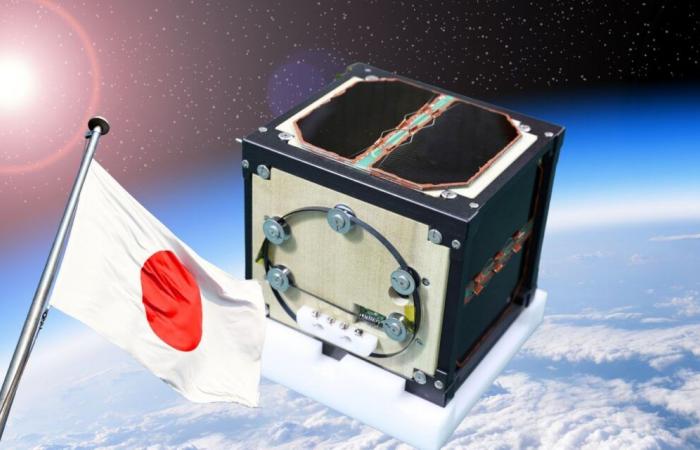
Japan launches the first wooden satellite, a daring ecological bet!
In an innovative and environmentally friendly approach, Japanese scientists are preparing to send the first wooden satellite in history. Called Ignosat, this satellite the size of a coffee cup, assembled using a traditional Japanese method without glue or screws, promises to revolutionize our approach to space technology and orbital pollution.
Also read:
A small satellite with big ambitions
The Ignosat project, designed by a team from Kyoto University, is based on the innovative use of traditional materials in the satellite design. This satellite, comparable in size to a cup of coffee, is assembled using an ancestral Japanese technique which excludes the use of glue or screws, illustrating a return to traditional methods adapted to modern technologies.
A launch planned with SpaceX
The sending of this unique satellite is planned aboard a SpaceX rocket, marking a significant collaboration between the space technology modern and traditional Japanese methods. This launch is planned for a six-month mission during which the satellite will be tested in the extreme conditions of space.
Compact dimensions and innovative design
The LignoSat satellite stands out not only for its unique use of wood but also for its particularly compact size. With a diameter of only 10 centimeters, it is barely bigger than a cup of coffee. This cube is made of magnolia wood panels, whose thickness varies between 4 and 5.5 millimeters, reinforced by a partially aluminum frame for increased robustness in the vacuum of space. Equipped with solar panels on some sides to power its systems, LignoSat has a light weight of approximately 1 kilogram, thus optimizing its energy efficiency and functionality in orbit.
Ecological and scientific objectives
The main objective of this ambitious project is to reduce space pollution. Wooden satellites, entirely biodegradable, could offer an ecological alternative to traditional metal structures, significantly reducing space debris. This satellite will test the viability of natural materials in the harsh environment of space.
Choice of material: onoki wood
The choice of wood was crucial for this project. After various tests, the team opted for onoki, a Japanese variety of magnolia known for its resistance and lightness. This wood was previously tested for a year on board the International Space Station to validate its resilience to extreme space conditions.
Tests in extreme conditions
The wood tests involved exposing samples to the vacuum of space, where temperatures can vary extremely quickly between 100°C and -100°C. These rigorous tests aim to ensure that the wood can withstand thermal fluctuations without degrading, while remaining environmentally sustainable.
Monitoring and performance expectations
The wooden satellite will be closely monitored for evaluate its resistance in real conditions and its ability to disintegrate cleanly in the Earth's atmosphere after its mission, without leaving any polluting residue. This mission could set new standards in space waste design and management.
Expansion projects in space colonization
Beyond satellites, researchers plan to use wood as the primary material for building future colonies on the Moon and Mars. This cutting-edge idea could radically transform the design of extraterrestrial habitats, promoting sustainable and ecological solutions in space colonization.
This mysterious particle shakes up our knowledge of gravity and opens the door to unimaginable technologies
This article explores Japan's pioneering initiative in developing the first wooden satellite, highlighting its potential to minimize the environmental impact of space exploration. With its ambitious objectives and innovative design, the Ignosat project could well mark an ecological turning point in the history of space conquest, paving the way for broader applications of sustainable materials beyond our planet.
Source : Nature.com





